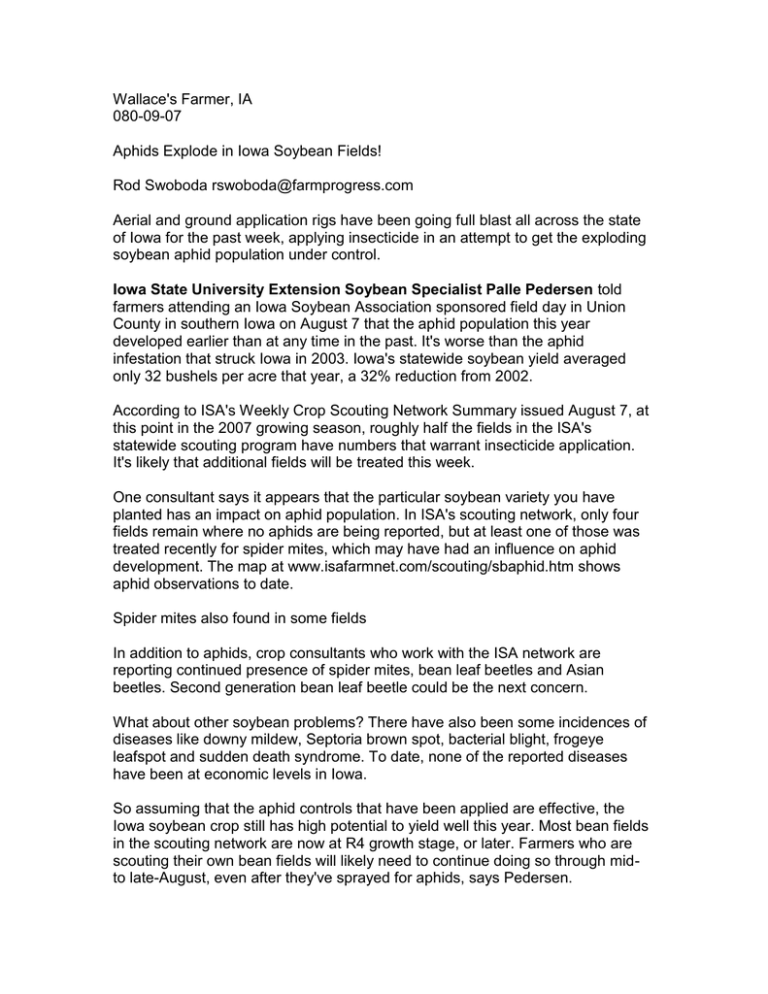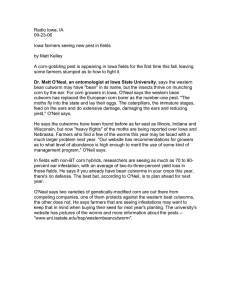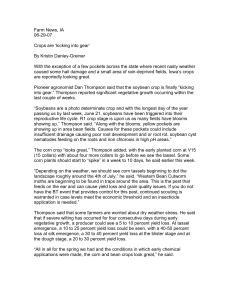Wallace's Farmer, IA 080-09-07 Aphids Explode in Iowa Soybean Fields!
advertisement

Wallace's Farmer, IA 080-09-07 Aphids Explode in Iowa Soybean Fields! Rod Swoboda rswoboda@farmprogress.com Aerial and ground application rigs have been going full blast all across the state of Iowa for the past week, applying insecticide in an attempt to get the exploding soybean aphid population under control. Iowa State University Extension Soybean Specialist Palle Pedersen told farmers attending an Iowa Soybean Association sponsored field day in Union County in southern Iowa on August 7 that the aphid population this year developed earlier than at any time in the past. It's worse than the aphid infestation that struck Iowa in 2003. Iowa's statewide soybean yield averaged only 32 bushels per acre that year, a 32% reduction from 2002. According to ISA's Weekly Crop Scouting Network Summary issued August 7, at this point in the 2007 growing season, roughly half the fields in the ISA's statewide scouting program have numbers that warrant insecticide application. It's likely that additional fields will be treated this week. One consultant says it appears that the particular soybean variety you have planted has an impact on aphid population. In ISA's scouting network, only four fields remain where no aphids are being reported, but at least one of those was treated recently for spider mites, which may have had an influence on aphid development. The map at www.isafarmnet.com/scouting/sbaphid.htm shows aphid observations to date. Spider mites also found in some fields In addition to aphids, crop consultants who work with the ISA network are reporting continued presence of spider mites, bean leaf beetles and Asian beetles. Second generation bean leaf beetle could be the next concern. What about other soybean problems? There have also been some incidences of diseases like downy mildew, Septoria brown spot, bacterial blight, frogeye leafspot and sudden death syndrome. To date, none of the reported diseases have been at economic levels in Iowa. So assuming that the aphid controls that have been applied are effective, the Iowa soybean crop still has high potential to yield well this year. Most bean fields in the scouting network are now at R4 growth stage, or later. Farmers who are scouting their own bean fields will likely need to continue doing so through midto late-August, even after they've sprayed for aphids, says Pedersen. Gray leaf spot disease showing up on corn Most corn in the ISA's scouting program is now at R3 growth stage or later. In corn, farmers and consultants who are participating in the program are now seeing a lot of gray leaf spot and common rust disease, and the occasional incidence of Stewart's wilt. Four of the fields have been treated with fungicides. Rootworm beetles are present in several fields, but there are no reports yet of this insect interfering with pollination of the corn plants. Another summer insect of corn - the western bean cutworm - is showing up in a few fields, but infestation appears to involve fewer than 5% of the plants. In one Bt refuge area in a cornfield, western bean cutworm infestation was reported at 10%, while the Bt corn had no problems. Except for the dry northwestern part of the state, moisture conditions in Iowa as of August 7 are generally good. In the northwest, though, corn leaves have fired off the lower part of plants and corn ears are not filling out as they should.


